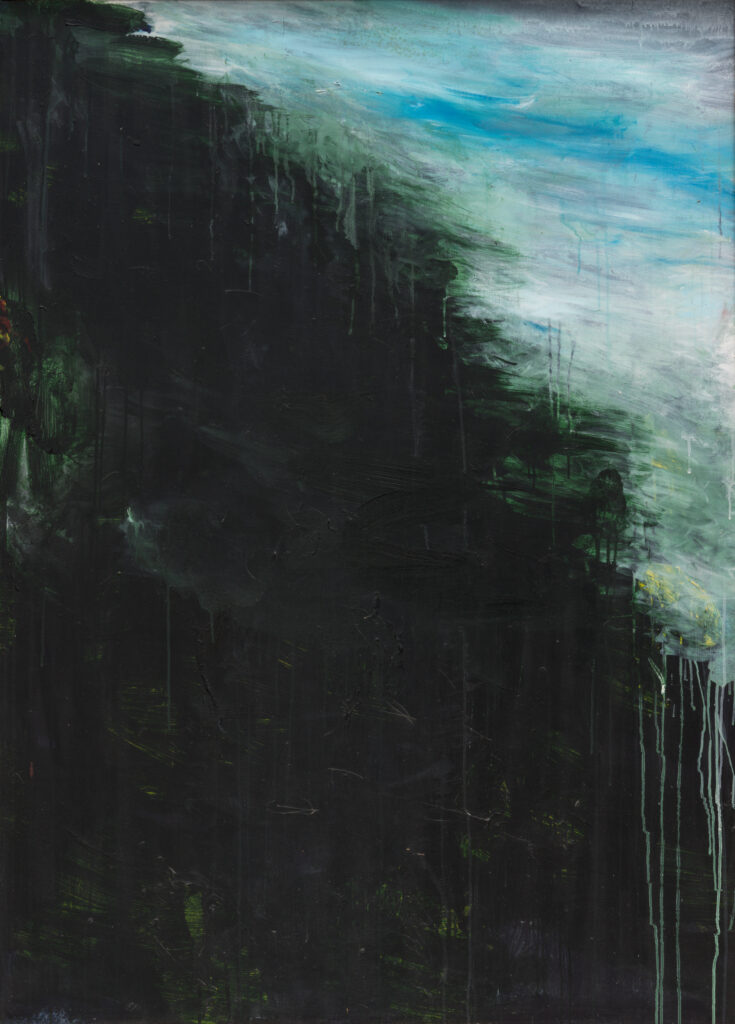Cy Twombly Brings His Otherworldly Art to Gagosian
The gallery’s glitzy uptown location hosts one of the 20th century’s signature painters.

‘Cy Twombly’
Gagosian, 980 Madison Avenue, New York, NY
Through March 22, 2025
“Cy Twombly” at Gagosian is a major presentation of an artist who can be difficult to grasp. The swanky gallery’s uptown Manhattan location on Madison Avenue devotes two floors to Twombly’s output between 1968 and 1990. Twombly was, like his father, named after the all-time great pitcher Denton True “Cy” Young, and he shared some of the old hurler’s durability. Twombly lived a long life, and his output has made its way into hallowed halls the world over.
Twombly’s talent was nurtured from a young age. He passed through the School of the Museum of Fine Arts, Boston, the Art Students League of New York, and that hothouse of the avant garde, Black Mountain College. This was the heyday of post-war American art, and Twombly’s path crossed with, among others, those of Robert Rauschenberg, John Cage, Franz Kline, Jasper Johns, and Robert Motherwell. He served in the Army as a cryptographer.
The colossus on the proverbial block was Jackson Pollock, whose drip paintings — dramatic, pouring, and slashing — defined what came to be known as abstract expressionism. The trio of Rauschenberg, Johns, and Twombly — they would chart their own course alongside, and often in opposition, to what would come to be called the New York School — dialed back Pollock’s grandiosity. Their work is more modest. It runs cool where Pollock was hot, simple where his was sublime.
Twombly’s most distinctive style is expressed in his “blackboard” paintings, to which Gagosian devotes an entire room. Created with oil and wax crayon on paper or canvas, they look like nothing before or since. A cross between graffiti and the chalk figures in a childhood classroom, the blackboard works manage to be painting and prose at once, dancing just beyond legibility. Imagine an alien race scrawling a rough draft of a constitution in cursive.

Photo by Maris Hutchinson for Gagosian
“Untitled,” 1971 is the largest work on display, and it appears to capture a ghostly meteor shower or a flock of sleek birds moving at volume and with density such that Twombly’s crayon discovers them blurred in mid-flight. Seen from the side their trajectory looks almost horizontal, like the angle of rain pelting a pane. A smaller work — “Untitled,” 1968 — features spiral forms that look like spinning galaxies mapped in a CalTech classroom.
There is a hidden hand behind this painting — that of an even greater maestro, Leonardo da Vinci. His “Deluge” drawings from between 1517 and 1518 imagine a wooded hill staggering under a flood of swirling precipitation and winds that would have caused even Noah’s Ark to spring a leak. There is something of the Florentine’s mirrored script, both analytical and aesthetic, in Twombly’s defining style. Twombly lived for decades at Rome and its outskirts.
If those works bear Pollock’s fingerprints, “Untitled,” 1971 is indebted to Mark Rothko’s panels. A series of nine canvases, it substitutes Rothko’s reds and oranges for subtler shades of black and grey that refuse to resolve into focus. They are reminiscent of tombstones for giants, or doorways into another dimension. This critic also was reminded of the poet William Butler Yeats’s summoning of the “widening gyre,” here sectioned nine ways.
Twombly’s heyday was during the years of Minimalism and Conceptual art, but his work eschews the mulish mystery and inchoate Pop of, say, his lover Rauschenberg’s series of Combines. Twombly doesn’t have the austere geometry of an Agnes Martin, the industrial edge of a Dan Flavin, or the simplicity of a Donald Judd. The blackboard paintings at times appear to owe no small debt to the calligraphy masters of Baghdad or Beijing.
Gagosian has gathered more than just blackboards. A sequence of paintings from the 1980s shows the artist gravitating toward green, as if the essence of a forest has been smeared on wood panels, themselves former trees. The paint is layered on thickly, but the vertical orientation frustrates the expectation of finding a horizon. “Paesaggio,” 1986 suggests a storm system on the move, illustrative of John Milton’s vision of Earth choked by her own “rank fertility.”
The exhibition’s final series is “Five Day Wait at Jiayuguan,” which was achieved at Rome but charged with the memory of a trip to Russia, Afghanistan, and central Asia. Jiayuguan is a city on the lip of the Gobi desert, and these paintings are filled with the reds and pinks of that harsh landscape. This critic’s favorite work in the show, though, is “Condottiero Testa do Cozzo,” which gestures to Titian. Seems the Old Masters get the last harrumph.

